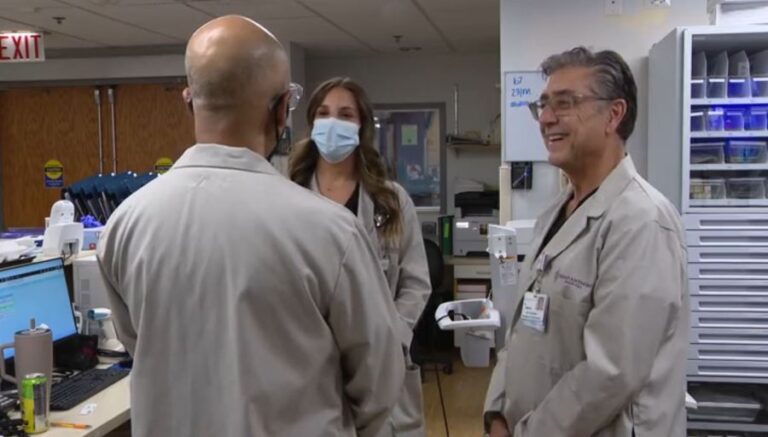Chicago – Many medical facilities face challenges when it comes to employing and preserving doctors – especially those in deprived neighborhoods. Instead of relying on third-party employees, Chicago Hospital has taken a traditional road-which is fruitful.
Dr. Romain Lavani is the chief medical official at St. Anthony Hospital in Chicago.
He said: “There is something about this hospital that people take immediately and celebrate and remain forever. I was supposed to be here three years and this is my twenty -first year.”
The doors have been open since 1898. St. Anthony has been on the southwestern side of the city between Little Village and Lawndale.
Dr. Monica Chulinsky is the assistant medical director of the Department of Emergency Medicine at St. Anthony Hospital.
She said, “It is mostly of Spanish origin. It is very coherent.” “These people were here for generations.”
About 80 to 100 patients visit the emergency room in the independent hospital every day.
“We do not reject anyone. We have patients who are not believers or not believers. We do not even ask the question,” Lavani said.
But Dr. Lavani asks one of the potential emergency department employees.
He said, “You are telling them at the forefront, you will face these challenges. Are you ready for that?” “We are fine if they say no.”
Dr. Chulionsky said yes.
“I was looking for something that would feel more feasible and more influential,” she said.
Emergency medicine specialist already lives in the neighborhood.
She said, “It seemed that I was really suitable for me to do this type of work, especially for my neighbors.”
“Their heart is in the right place. They are ready to serve services and suffer from facing the daily challenges that come with that,” Lavani said. “It is difficult to get this with a third party.”
More coverage: WGN Medical Watch
While about two -thirds of the emergency medicine specialists in two -thirds of hospitals, Saint Anthony officials have added seven of full -time documents and many doctors' assistants to employees, a step they hope to build a culture of intimate friendship and mercy.
“It was very difficult to make the third party to understand what we are trying to do for society,” Lavani said. “They were professionals, they were doing a good job, but they did not feel the need to indulge in this task completely.”
“It is actually a Hina hospital, which is great minutes away from our house, so it is just a coming and goes,” said Martha Cortez. “My daughter had a fever as a fever as soon as we arrived. I asked for help in the foreground and returned my daughter immediately … and now we returned again with my second child.”
“We believe that the patient here should get the same care that they would have obtained on Michigan Street,” Lavani said.
Although the wage may not be the same, there are other privileges, including assistance in paying loans to medical employees.
“What we can offer is the work experience, right? The experience is very satisfactory, and some people want it, most people want it.”
The team made a team. Last year, the number of patients who left without treatment decreased from about 4.77 percent to less than 2 percent.
“We are really creative regarding what we can do and how we can navigate the challenges,” said Chulionsky.
“It comes to this desire, which will do good by your patient, which is very important,” Lavani said.
The patient's classification has improved in the hospital since the transmission of employment. ER team says they hope that more positives will come as a result.
Subscribe to our medical newsletter. This daily update includes important information from WGN's Dina Bair and the Med Watch team, including the latest updates from health institutions, in -depth reports on progress in medical technology and treatments, as well as personal features related to people in the medical field. Subscribe here.
Copyright 2025 NexStar Media, Inc. All rights reserved. These materials may not be published, broadcast, written or redistributed.
For the latest news, weather, sports, and broadcast, head to WGN-TV.
